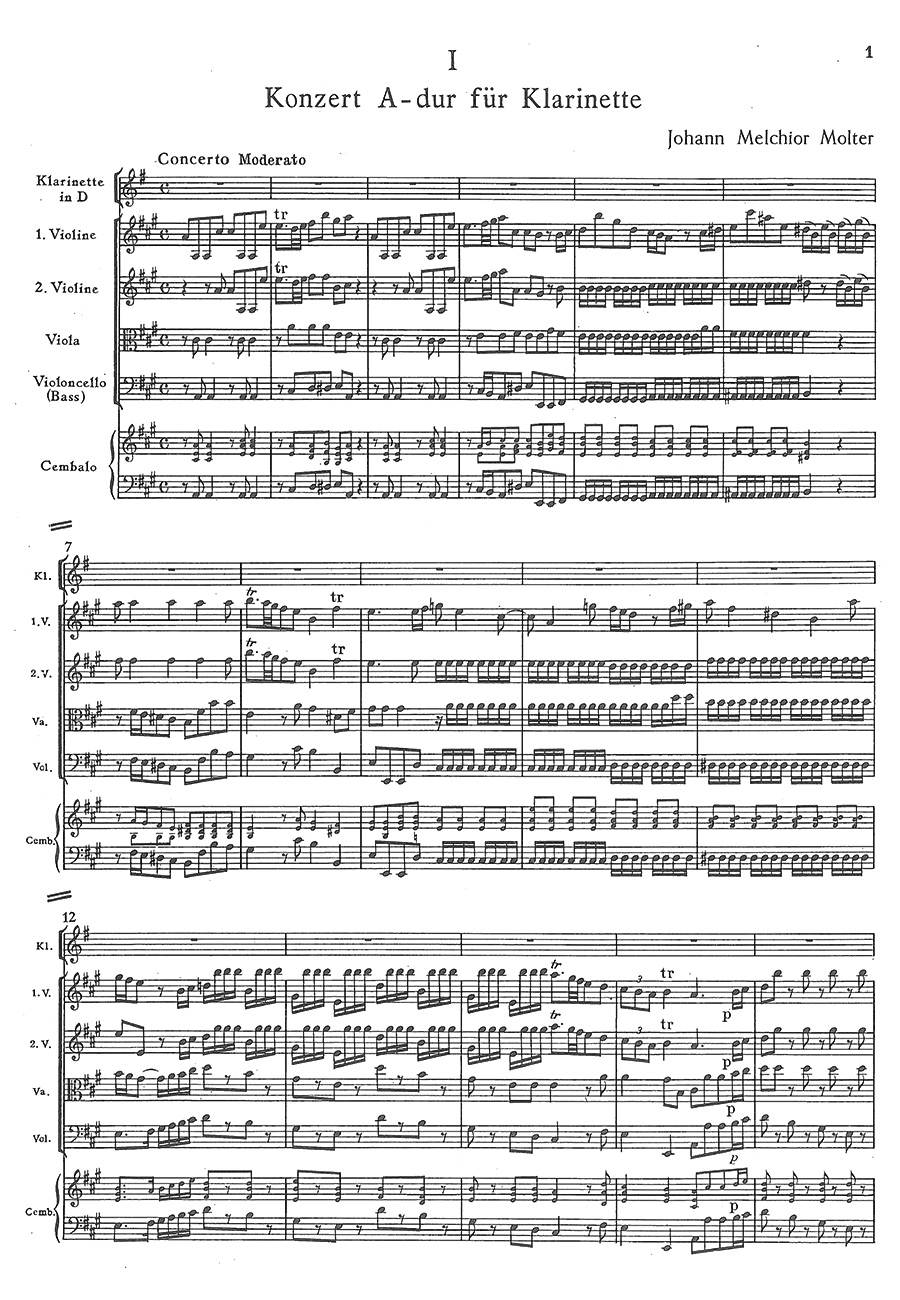Clarinet Concertos MWV VI/41 in A Major, MWV VI/38 in D Major, MWV VI/40 in G Major, MWV VI/39 in D Major
Molter, Johann Melchior
19,00 €
Preface
Johann Melchior Molter
Clarinet Concertos
MWV VI/41 in A Major, p.1
MWV VI/38 in D Major, p.13
MWV VI/40 in G Major, p.27
MWV VI/39 in D Major, p.40
(b. Tiefenort, 10. February 1696 –d. 12. January 1765)
Preface
Johann Melchior Molter spent most of his career as the Kapellmeister at the Baden-Durlach court in Karlsruhe, Germany. If his name is recognized at all today, it is usually in connection with the four clarinet concertos published here. They and two others he composed count among the earliest extant solo works for clarinet, dating from about 1745, and were all written for the clarinet in D, which is rarely found today.
Molter’s manuscripts are held at the Baden State Library (Badische Landesbibliothek) in Carlsruhe. The four concertos in this publication are listed in the library’s Molter catalogue, the Molter Werksverzeichnis (MWV), as follows: MWV VI/38 and MWV VI/39, both in D Major, MWV VI/40 in G Major, and MWV VI/41 in A Major. These four works were edited by Heinz Becker and published, along with two clarinet concertos by František Pokorny, by Breitkopf & Härtel in 1957.1 The B&H engravings of the same four Molter concertos have been re-used for the present edition. His fifth and sixth clarinet concertos (MWV VI/36 and MWV VI/37, both in D Major) are not included here.
Upon first hearing, the solo lines given the clarinet by Molter bring to mind virtuosic Baroque music for the natural trumpet (clarino), e.g., Bach’s Brandenburg Concerto No. 2. The tessitura of the D clarinet is higher and its tone shriller than the range and sonority of the mellow B-flat clarinet, which is now ubiquitous in wind-band, klezmer, and jazz (especially traditional New Orleans, or “Dixieland,” jazz) music, while it and the A clarinet have been universally scored in orchestral, operatic, and chamber music since around 1800, the era of late Haydn and early Beethoven.
Clearly aware of the limitations of the early two-key clarinet for which these concertos were likely composed, Molter largely avoided its low range, restricting the instrument almost exclusively to its middle and upper registers. All conjunct melodic writing for the clarinet takes place from third-space C upward, and it is given a variety of diatonic scale passages, triplet sixteenth-note figures, grace-notes, trills, thirty-second- and sixty-fourth-note appoggiaturas, échappées, and other connective flourishes and ornaments, almost all of which lie comfortably under the fingers in the keys Molter chose.
Read full preface / Komplettes Vorwort lesen > HERE
Score Data
| Score No. | 1670 |
|---|---|
| Edition | Repertoire Explorer |
| Genre | Solo Instrument(s) & Orchestra |
| Size | 210 x 297 mm |
| Printing | Reprint |
| Pages | 60 |
